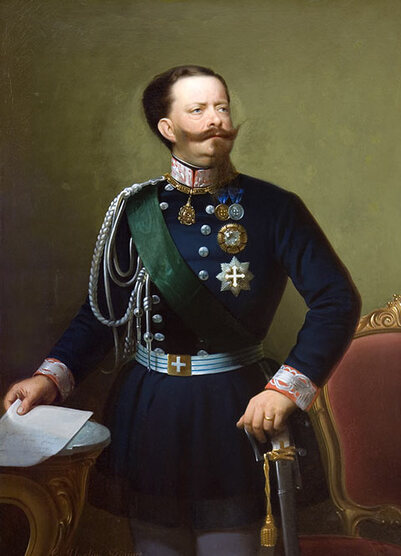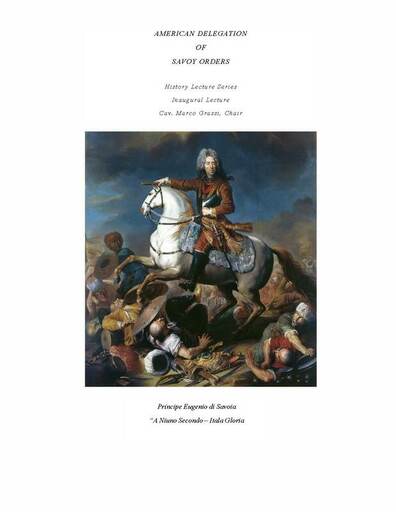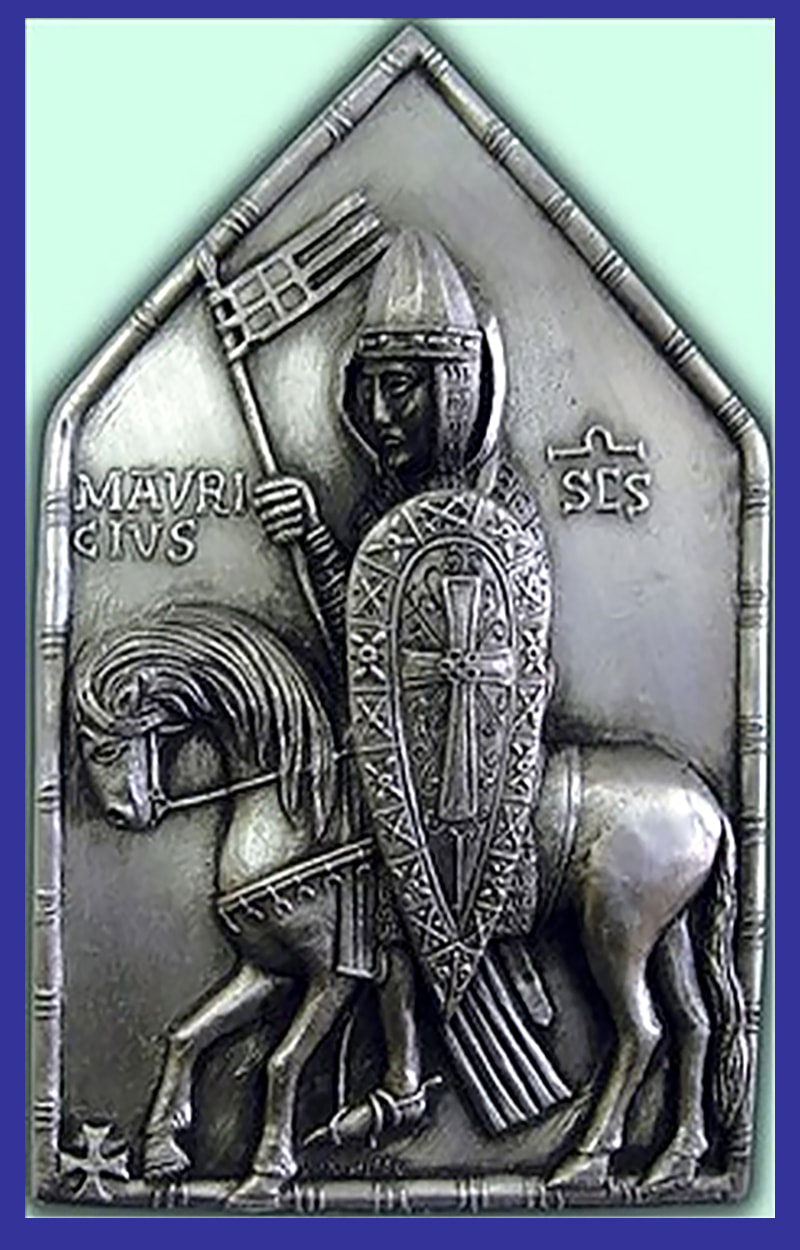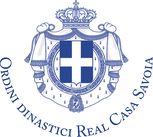American Delegation of Savoy Orders
the history
of the
Royal House of Savoy
|
The Royal House of Savoy is one of the oldest royal dynasties in Europe, which celebrated its millennium in 2003. This section includes a detailed history and portraits with biographies of the Counts, Dukes and Kings of the Savoy dynasty; castles and palaces associated with or constructed by the Savoys; and royal abbeys and chapels erected or endowed by Savoy family members.
|
|
|
|
INTRODUCTION TO THE MILLENNIUM OF THE SAVOY DYNASTY: 1003-2003The Royal House of Savoy marked the millennium of its founding in 2003. Its pedigree traces back to an historical figure living in 1003, Humbert the "Whitehanded," whose success in establishing himself as a powerful ruler in the region of Savoy created the foundation upon which his descendants would continue to expand for the next ten centuries. The dynasty's ultimate achievement was the unification of the Italian peninsula under its rule in 1861. The Savoys are one of Europe's oldest reigning houses, related to almost every royal house of Europe. Succeeding heads of the dynasty rose from Counts to Dukes of Savoy. In 1713, they became Kings of Sicily and assumed the dignity of Majesty. Thereafter, the Sicilian crown was exchanged for that of Sardinia and the Savoy dynasty ruled the Kingdom of Piedmont-Sardinia. In 1861, King Victor Emmanuel II led the movement for Italian unification, ceding Savoy to France in the process, and he and his descendants reigned as sovereigns of a united Italy until 1946. Today, Savoy is a province consisting of Savoie and Haute Savoie in Southeastern France, to the west and south of Geneva. |
BEGINNINGS: THE EARLY COUNTS OF SAVOY (1003-1323)The Romans knew the area of Savoy as Saubauda. The Burgundians overran the Alpine region after the fall of the Empire in the 5th Century and quickly annexed it to their domains. Almost a century later, the Franks followed the Burgundians and by the 9th Century, Savoy was an integral part of the Frankish Emperor Charlemagne's Empire. The Emperor and his descendants carved up the area into fiefdoms and counties. The subsequent disintegration of the Carolingian Empire brought Savoy once again in the sphere of the Burgundian Kingdom. Petty nobles who ruled the parts of the terrain frequently contested sovereignty over the area. The founder of the Savoy dynasty, Humbert the "Whitehanded" (980-1048), was born in the year 980 of possibly Teutonic ancestry. He was a knight of the Holy Roman Empire and assisted in the campaign of King Conrad the Salic to solidify his claims to Burgundy. (The basis of his nickname is not recorded and has been the subject of speculation. Two theories are that he was extremely pale or that his hands were snow-like in appearance owing to the Alpine climate. Another attributes it to a mistranslation of the white walls of his castle.) By 1003, the Emperor had accorded him the title of Count of Salmourenc in the Viennois. By 1017, he assumed the County of Nyon by Lake Geneva, and in rapid succession, received the territory now known as the Val d'Aosta, with its strategic mountain passes through the Alps. By 1034, he had control of the counties of Savoy, Maurienne, Belley, part of the Chablis and the Tarantaise. Count Humbert I of Savoy commanded access to three Alpine passes; namely Mount Cenis and the two St. Bernard passes. The first Count of Savoy married the daughter of the lay rector of the Abbey of St. Maurice d'Agaune, a site that would later figure prominently in the history of the House and the Order of Sts. Maurice and Lazarus. Humbert had established the foundation of his dynastic house in Savoy and proven himself an able vassal of the Holy Roman Emperor. In an age of uncertain alliances and even shorter longevity, he had a successful and long life, pacifying the area of Savoy and its surroundings and emphasizing the charitable work of the monasteries and churches. When he died in 1048, he was buried in the Cathedral of St. Jean de Maurienne. Read More |
CONSOLIDATION: THE LAST COUNTS OF SAVOY (1323-1415) Amadeus the Great was succeeded by two of his sons. The first, Count Edward the Extravagant (1284-1329), wreaked havoc on the state's finances due to his spending but generally continued faithful to his late father's policies. The Fifteenth Count of Savoy and his wife, Bianca of France, had one child, a daughter, but she was excluded from the succession due to the Salic Law. His reign lasted but six years and, in 1329, he was succeeded by his younger brother, Aimone, as Sixteenth Count of Savoy (1291-1242). As extravagant as his brother had been, Aimone was also cautious and sensible, and earned the appellation of "the Peaceful". By sheer strength of character and leadership, and without force of arms, Aimone was able to pacify a rebellious Geneva and steer his country clear of the ravages of the Hundred Years War plaguing France. Neutrality in the Anglo-French wars and peace with the Empire brought prosperity to the Savoy state and replenished its coffers depleted by Count Edward. The rule of law was codified and a Chancellery created to administer justice in the Count's name. He lavished attention on the Abbey of Hautecombe and built the ornate Chapel of the Princes as the final resting place for members of the House of Savoy. It was here that he was interred next to his ancestors. Read More |
EXPANSION: THE EARLY DUKES OF SAVOY (1415-1713)Amadeus VII’s death led to the accession of his eight-year old son, Amadeus VIII (1383-1451). The young prince’s position was perilous: because of its strategic situation, Savoy was inevitably drawn into the geopolitical struggles between the Emperor, the Pope and the French. The three powers vied for influence and control; fortunately, the young prince was endowed with firm determination and loyal nobles to defend his interests. And so he matured and successfully resisted the ambitions of his powerful neighbors as well as those of the Dukes of Bourbon, Berry and Burgundy. His baptism of fire came on the attainment of his majority in 1398 when he led his loyalists in checkmating a threat to the succession by the heirs of the Counts of Geneva. Recognizing the need to gain an important ally through marriage, he chose as his bride Maria of Burgundy. Intelligent, serious, affable and gallant, the young Nineteenth Count of Savoy was able to increase his control in Italy and Nice with little interference from the great powers. From 1401 to 1422, he campaigned to recover the area around Geneva and Annecy. To accomplish this he signed treaties with Burgundy, the Duke of Milan (whom he made his son-in-law) and the Cantons of Freiburg and Berne. In 1415, Emperor Sigismund raised the Country of Savoy to a Dukedom and Amadeus became its first Duke. The new duchy was further enlarged at the death of his relative, Louis of Savoy, Duke of Piedmont, the last descendant of Thomas II of Savoy who had founded the Piedmont branch of the dynasty. The Duke also nominated a supporter as Bishop of Geneva. Read more |
A ROYAL HOUSE: THE FIRST KINGS (1713-1861)The Fifteenth Duke, Victor Amadeus II (1666-1732), was born in Turin. He was only nine when he succeeded his father and his mother, Maria of Savoy-Nemours, became Regent. These were tumultuous times for Europe. King Louis XIV of France was on a grand quest to become Europe's greatest monarch and to increase Bourbon power at the expense of all, but particularly the Habsburgs, perpetual rivals of the Bourbons. A shrewd politician and statesman, the Duke of Savoy switched sides numerous times to maintain the independence of Savoy. His alliances were flexible. The fact that two of his daughters were married to grandsons of King Louis XIV (one was the wife of the Duke of Burgundy and the other married to King Philip V of Spain) and he himself had married a niece of the King of France did not deter him from turning against the French when it was necessary or expedient. An alliance with the Imperial forces in 1703 resulted in the French occupying Turin. Victor Amadeus finally liberated the capital with the assistance of his cousin, Field-Marshal Prince Eugene of Savoy, one of the ablest military leaders of the day. Victor Amadeus ordered the construction of the Royal Basilica of Superga in Turin in thanksgiving for the liberation of the city. In quick succession, Nice and Susa were also retaken from the French. The Treaty of Utrecht in 1713 ended the War of Spanish Succession and, for his participation, conferred Monferrat and the Kingdom of Sicily upon Victor Amadeus. The Duke of Savoy was now a King with the style of Majesty. In 1718, the title of King of Sicily was exchanged for that of King of Sardinia, the title that he and his successors would retain until the unification of Italy in 1861. Read more |
|
|
RISE OF THE SAVOY-CARIGNANO BRANCH: 1831The junior branch of the House of Savoy, the Princes of Carignano, was descended from Duke Charles Emmanuel I of Savoy who died in 1630. His second son was Duke Victor Amadeus I and the senior branch was descended from him to King Charles Felix who died in 1831. Duke Charles Emmanuel's fifth son, Thomas, whom he created Prince of Carignano (died 1656), was the progenitor of the Savoy-Carignano line. The celebrated Field Marshal Prince Eugene was a Savoy-Carignano, Thomas' grandson. The senior member of the Savoy-Carignano branch of the family on the death of Charles Felix was Prince Charles Albert (1798-1849), who succeeded as Twenty-first Duke of Savoy and Seventh King of Sardinia in 1831. Born in Turin in 1798, he had married Archduchess Maria Theresa of Austria, daughter of Grand Duke Ferdinand of Tuscany. He was raised as heir presumptive to his cousin and participated in the French campaign to suppress the Spanish insurrection in 1823. The young Charles Albert dazzled the courts of Europe by his good looks, keen intellect and easy manner. Also a patron of the arts and sciences, he was loyal to the church and supportive of its charitable activities. Public monuments were ordered to give Savoyards a sense of history, cities were mapped out along grand avenues, the royal archives and treasures were opened to the public to view, and scientific congresses were sponsored by the King. The chivalric orders were restructured to reflect modern circumstances without, however, diminishing their mission or purpose. The Civil Order of Merit of Savoy was founded on October 29, 1831, to honor those citizens of the realm who were no less important than the military. Read more |
UNIFICATION OF A NATION: THE KINGS OF ITALY (1861-1946)Cavour continued to plan for the elimination of the Bourbon dynasty in the Two Sicilies and to absorb it into the new nation. King Ferdinand II had died in 1859 and was succeeded by his young untried son, King Francis II. Cavour secretly planned and funded a military expedition from Genoa led by Giuseppe Garibaldi with thousands of "red shirted" followers to invade Sicily. Piedmontese agents had quietly bribed leading Neapolitan officials to betray their sovereign at the appointed hour. Garibaldi and his followers landed in Sicily and quickly seized the island from the Bourbon forces. The Bourbon army was weakened by the inertia of its high command, which had been compromised. By 1860 Garibaldi's forces crossed the Straits of Messina onto the mainland where there were skirmishes en route to Naples. Francis abandoned the capital on the advice of his military advisors and engaged Garibaldi's forces at the Volturno. Events were moving too quickly and the Piedmontese intervened to corner the Bourbon forces. Francis thereafter retreated to a courageous defense at the citadels of Gaeta on the sea and Civitella del Tronto in the Abbruzzi. Victor Emmanuel entered the Two Sicilies where he met Garibaldi, who ceded his authority as Dictator to the King. By 1861, the courageous remnants of the Bourbon Army that remained loyal to their King honorably surrendered after a devastating siege at Gaeta and Civitella and King Francis and Queen Maria Sofia were transferred to a French corvette to exile without abdicating. A fierce guerrilla war followed for almost a decade that forced the deployment of over 75,000 Piedmontese soldiers in the Two Sicilies to maintain order as the remnants of the Bourbon Army and a recalcitrant segment of the populace fought the new régime. Referendums were quickly held and the incorporation of the Two Sicilies into the new Kingdom of Italy was ratified. King Victor Emmanuel II was proclaimed King of a united Italy on February 18, 1861. After the fall of Rome in 1870, the Papal capital became the seat of the new Kingdom. Read More |
ROYAL HOUSE IN THE MODERN WORLD: |
THE HOUSE OF SAVOY: THIRTEENTH CENTURY ENGLAND AND THE MEDIAEVAL EUROPEAN COMMUNITY - The Savoia at the Court of Henry III of England (1216-1272)Eleanor of Aquitaine (1122-1204) is one of the most remarkable figures of the High Middle Ages. She was daughter and sole heiress of William, Duke of Aquitaine. Barely fifteen, Eleanor married the future King Louis VII of France and, as Queen of the Franks, she participated in the Second Crusade. Upon returning to France, she managed to have her marriage annulled and promptly married the much younger Duke of the Normans, Henry II. When Henry ascended the English throne in 1154, Eleanor became queen a second time! She bore Henry eight children, two of whom would become kings of England: King Richard “the Lionheart” and his younger brother King John. It was John who, under duress, consented to sign the ‘Magna Carta’ in 1215 granting certain fundamental rights to his subjects. This document, and the precedent it set, has been rightly regarded as the foundation for much of European law. Henry, John’s son, ascended the throne of England as a boy in 1216 and ruled as King Henry III for fifty-six years. He married Eleanor of Provence, one of the four daughters and heiresses of Raymond, Count of Provence, by his wife, Beatrice of Savoy. Henry did not forget about his wife’s Savoia connections and brought his Eleanor’s uncles – Peter of Savoy and Boniface of Savoy – to England. Peter was invested with the highest English title at that time: the earldom of Richmond. Henry named Peter’s brother Boniface Archbishop of Canterbury. Members of the Savoy family were, therefore, to play significant roles during this, one of English history’s most important periods. Henry also assigned land and buildings in London to Peter of Savoy and they became the Savoy Palace – a legacy that survives to this day in the legendary hotel, theater and mediaeval chapel, all bearing the Savoy name on exactly the same historic site. Professor Tyerman’s lecture brought to life the extraordinary people and stirring events that marked this fascinating moment of mediaeval history. A recognized authority on mediaeval history, Professor Tyerman is the author of a number of important scholarly works, among them: God’s War: a New History of the Crusades, England and the Crusades and the eight-volume Who’s Who in Early Mediaeval England. Professor Tyerman is currently on the faculty of Hertford College and New College, Oxford. Read More |
UMBERTO II, KING OF ITALY (1904-1983): His Life as Crown Prince, Lieutenant General of the Realm and KingIn honor of the centenary of his birth, September 1904, the late King Umberto II, last King of Italy, was the subject of a in-depth lecture prepared by Cav. Gr. Cr. Nobile Francesco Carlo Griccioli, a scholar, writer and lecturer on European military history and the current Delegate of Tuscany to the Dynastic Orders of the Royal House of Savoy, and delivered at and by the Director of the New York Genealogical and Biographical Society, Cav. William P. Johns, on Monday 18 October 2004. This was the second in the American Delegation of Savoy Orders’ History Lecture Series. Umberto was the son of Vittorio Emanuele III of Italy, who became King in 1900 and abdicated in May 1946, in favor of HRH Crown Prince Umberto. It was, of course, during his long reign that Fascism manifested itself as Il Duce, Benito Mussolini, rose to political power. And it was Mussolini who led Italy into chimerical colonial adventures and into an ill-fated alliance with Nazi Germany. Vittorio Emanuele has long been suspected by scholars of, at best, passivity vis-à-vis Mussolini’s reckless leadership or, at worst, complicity with Il Duce. Mr. Griccioli’s lecture shed much light on the political circumstances of the time. In effect, things were not so simple. In Mr. Griccioli’s view, the King despised Mussolini; but he also believed that any attempt to remove him from power (the army was absolutely loyal to the Crown) would lead to civil war and possibly even to the collapse of the monarchy. When Italy entered into the Second World War, the King wrote a memo to his son, Crown Prince Umberto (whom Mussolini had “demoted” from Crown Prince, with its hereditary implications, to simply Prince of Piedmont), analyzing the situation. The King outlined three options: arrest Mussolini and take control of the government himself; abdicate; or go along and try to make the best of a bad situation. Read More |
THE SWIFT SWORD OF SAVOY - Prince Eugene of Savoy (1663-1736) as General, Statesman, Connoisseur and collectorThe lecture surveys Prince Eugene of Savoy's considerable achievements both in war and in peace. Born in 1663 in Paris, the future imperial field marshal was of Savoyard, Spanish, Italian and French descent. His father, Eugene Maurice, was descended from the cadet branch of the ducal house of Savoy and the French royal house of Bourbon. His mother, Olympia Mancini, was the niece of Cardinal Mazarin, prime minister of France to the young King Louis XIV. Prince Eugene's family intended him for a career in the church although he longed for a military career. When Louis XIV turned down his application for a commission, the young Prince fled the French court and entered the service of Holy Roman Emperor Leopold I. His first mission in Austrian service was to help relieve Vienna, then under siege by the Turks. He distinguished himself sufficiently that he was offered the command of a regiment of Dragoons. From that beginning, Prince Eugene went on to a brilliant series of military victories culminating in his most celebrated triumph, jointly with John Churchill, Duke of Marlborough: the crushing defeat of allied French and Bavarian forces at the Battle of Blenheim in 1704. He died in 1736, aged 73. Prince Eugene was also an avid book collector and builder. At the Prince's death, his library accounted over a tenth of the value of his total estate which also included four palaces. The Prince's handsomely bound collection of books and manuscripts was not just for show: one friend commented that he had read, or at least skimmed, nearly all the books in his library. The Prince's palaces were equally impressive, including his art collection, gardens and private menagerie of exotic birds and beasts. Eugene was surely the greatest military genius the House of Savoy has produced, but there is no dearth of great soldiers on the family tree. Eugene's grandfather, Thomas of Carignano, was redoubtable Savoy warrior for France and Spain and the founder of the present royal line. Eugene's great great grandfather, Duke Emmanuel Philibert, won a crushing victory over the French at St. Quentin in 1557 as a commander of the Spanish army and definitely dashed French ambitions for European military supremacy for over a century. Read More |
|
|
ITALY AND THE ROYAL HOUSE OF SAVOY IN THE GREAT WAR |
A BRIEF HISTORY |
A BRIEF HISTORY |
History |
Biographies |
Castles & Palaces |
Abbeys & Chapels |
History Series |
























